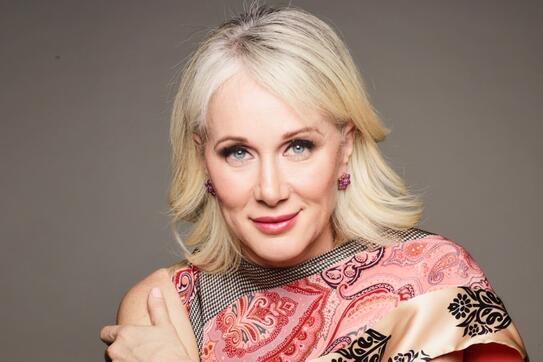As a child, Pauline Brown yearned for only three things in life: “pierced ears, a puppy, and a Panasonic Take-n-Tape.” While she didn’t get the pierced ears and the puppy until later, her parents did gift her with a Take-n-Tape, which was a type of portable radio and tape recorder made by Panasonic that was characterized by its distinctive sleek, pod-like silhouette of glossy plastic in bold hues like taxi cab yellow. While there were products other than the Panasonic Take-n-Tape on the market that had the same functional capabilities of playing and recording songs from the radio, they did not captivate Brown in the same way. It was the Take-n-Tape that first showed Brown, who currently serves as Executive-in-Residence at Columbia Business School, the power of aesthetics to create incredible consumer desire.
Later, as an executive at leading global luxury firms including LVMH and Estée Lauder, Brown soon began to see that the insight that she had derived as a young child yearning for a Take-n-Tape had huge ramifications for the business world—that “Aesthetic Intelligence” was as important for business success as the traditional financial and operational metrics that she had chased for her clients earlier in her career as a consultant at Bain & Company.
Aesthetic Intelligence, as Brown defines it, is the ability to use one’s senses to both appreciate and elicit, and recreate pleasurable experiences. In a word, it’s taste. While the fashion and beauty industries have always relied on engaging the senses to elicit customer delight and drive business, many other industries have never considered the role of aesthetics in their businesses, or have seen it as just icing on the cake. For example, Brown reminds us that Steve Jobs demonstrated that aesthetics applies to every product when he infused design into the computer industry, and demonstrated that selling such devices was about more than just microprocessing power, storage, and price.
Brown’s findings led her to consolidate her insights into a Harvard Business School course, The Business of Aesthetics, which became a highly popular elective at the School. To her surprise, the course drew students not only from marketing and retailing backgrounds, but also from backgrounds as diverse as technology, hedge funds, and startups. This led Brown to write Aesthetic Intelligence: How to Boost It and Use It in Business and Beyond (fall 2019) to share broadly the ideas she refined while teaching at Harvard.
Speaking about the importance of bringing the material of the course to a wider audience, Brown says, “When it comes to business, aesthetics has the potential to unlock a lot of value—and not just for traditionally design-oriented companies. In a world in which people need and want less ‘stuff,’ yet crave richer and more meaningful experiences, the focus for businesses must shift from meeting functional needs to delivering delight. The ability to create beauty, arouse the senses, lift the human spirit, and forge connections—that’s where people and businesses ultimately win.”
In addition to detailing how any business, including B2B businesses, can infuse aesthetics into their identity, Brown’s book is built on the firm belief that aesthetically intelligent people are not born, but made; “The Other AI” is a muscle that you can develop.
Come hear from Pauline Brown at BRITE ’20 to find out more about how to develop aesthetic intelligence and harness its power to transform your business.
